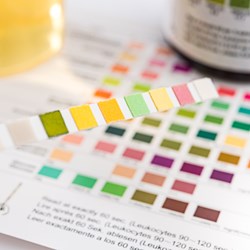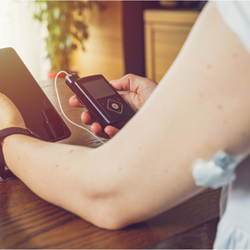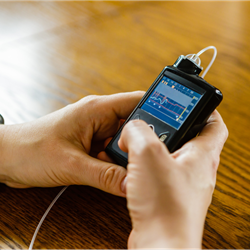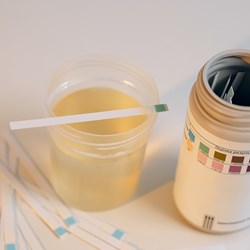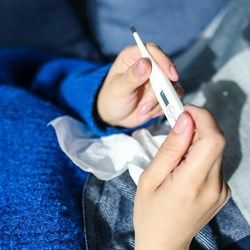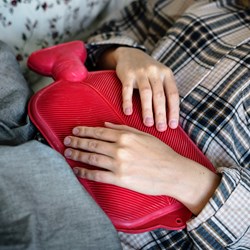Short Term Complications
Low Glucose
Hypoglycaemia, more commonly known as a hypo, is when your blood glucose levels go low, typically below 4mmol/L. Only people using insulin or medications like gliclazide, glipizide, diamicron, glimepiride, glibenclamide are at risk of having hypos.
Everyone’s symptoms are slightly different, but the most common symptoms are trembling; sweating; becoming irritable or upset; going pale; lips tingling; blurred vision; confusion; tiredness and dizziness or a fast heartbeat. You should recognise the warning signs and act quickly, and tell your friends and family what to look out for.
To treat a hypo you should drink something sugary or 15-20g of a quick-acting carbohydrate such as 8 jelly beans or 4-6 glucose tablets, and follow on with some slow-release carbohydrate such as a banana or sandwich. You should recheck your blood glucose level after 10-15 minutes to make sure it has normalised. If someone has a severe hypo and has become unconscious, then contact the emergency services immediately.
High Glucose
Glucose levels may go high due to illness, inactivity, missed treatment or higher carbohydrate intake. People with type 1 diabetes need to adjust their insulin levels in response to high glucose levels, otherwise, Diabetic Ketoacidosis (DKA) can occur. DKA is when your body doesn’t have enough insulin so it can’t use glucose as energy, and starts burning fat instead. The fat tissue produces an acidic substance called ketones, which if left untreated can build up in the bloodstream and can make you very ill.
Symptoms of DKA are normally extreme thirst; urinating more; tiredness; confusion; stomach pain; vomiting and/or diarrhoea; strange taste and breath that smells like pear drop sweets. If you have type 1 diabetes, high glucose and tested positive for ketones then you should contact your diabetes team immediately (see sick day rules).
Both hypoglycaemia and DKA are serious conditions that need immediate action to prevent you from becoming very unwell. Testing your blood glucose levels regularly helps prevent both hypos or DKA.
Have a look at our resources below so you feel confident that you will be able to recognise the short-term complications you may experience, how you should treat them, what to do when you are ill and when you should seek medical help.
Advanced Search
Resource type -
Language -
Type of diabetes -
Flowchart for managing large (high) ketones when using a hybrid closed loop.
The Association of British Clinical Diabetologists (ABCD) sick day flowchart for users of hybrid closed loop.
TREND UK leaflet explaining what hypoglycaemia is, the warning signs of a hypo and how to treat it.
Sick day rules flowchart for insulin pump therapy users.
Flowchart for managing trace (low) ketones when using a hybrid closed loop.
When you have diabetes, it’s important to know how to cope when you’re unwell. Being ill can upset your diabetes management, so you need to know what to do to keep your blood glucose (sugar) levels as close to target as possible. Some people will know these as sick day rules.
TREND UK guide for Type 1 Diabetes: What to do when you're ill.
TREND UK guide for Type 2 Diabetes: What to do when you're ill.
